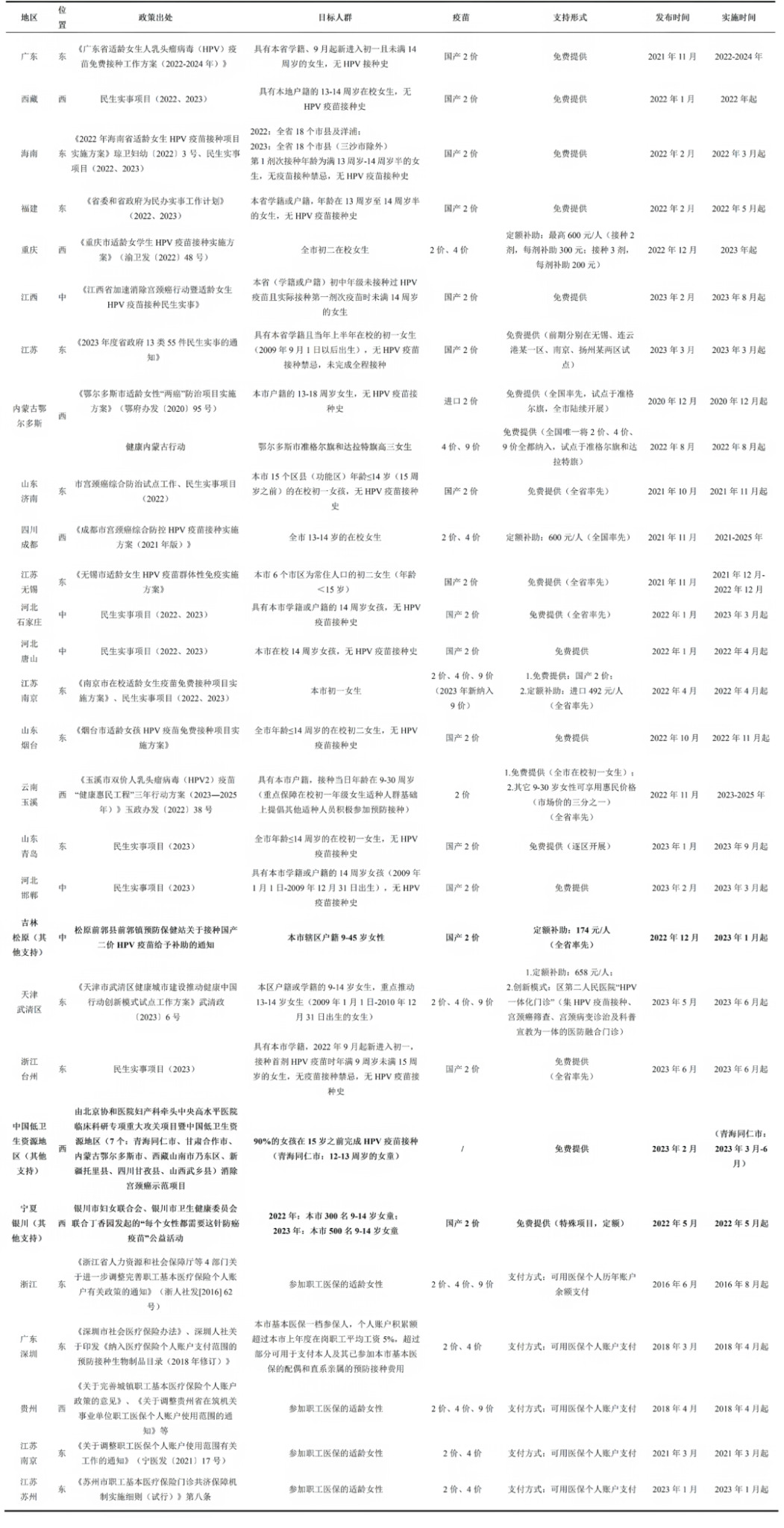Journal Content Recommendation
01
Current status of parental decision-making of childhood 13-valent pneumococcal conjugate vaccine immunization and related factors in China
This study was published in the Chinese Journal of Epidemiology. It aims to analyze the relationship between health belief and the stages of parental decision-making on childhood 13-valent pneumococcal conjugate vaccine (PCV13) immunization in China.
This study used a cross-sectional multistage survey sampling method to select study subjects. The study subjects were parents aged 20-45 years and had one or more children ≤5 years old in three cities (Beijing, Guangzhou, and Hangzhou). A self-administered questionnaire designed based on the health belief model was used to collect the information. Multinomial logistic regression analysis was used to assess the relationships between perceived susceptibility, perceived severity of illness, perceived effect of PCV13, and stages of parental decision-making on childhood PCV13 immunization.
A total of 1,716 valid questionnaires were returned (89.33%). The average age of the study subjects was (35.33±4.95) years, and 79.60% of them were women. In the study subjects, 48.31% had in action, 21.79% were in contemplation and 29.90% were in pre-contemplation. The multinominal logistic regression analysis indicated that high perceived susceptibility (OR=0.14, 95% CI:0.09-0.22; OR=0.54, 95% CI:0.39-0.76), high perceived severity of illness (OR=0.55, 95% CI:0.42-0.73), and high perceived effect of PCV13 (OR=0.27, 95% CI:0.18-0.40; OR=0.51, 95% CI:0.32-0.81) were significantly lower in those who were in contemplation or pre-compared with those who had in action. For study subjects with low perceived susceptibility, the high perceived effect of PCV13 might decrease the probabilities of contemplation (OR=0.53, 95% CI:0.32-0.87) and pre-contemplation (OR=0.27, 95% CI:0.18-0.41). For those with high perceived susceptibility, the perceived severity of illness might decrease the probability of contemplation (OR=0.43, 95% CI:0.23-0.82).
Overall, the willingness to vaccinate and the actual vaccination rate for PCV13 among children in our country are low. To increase the vaccination rate, it is necessary to focus on intervening in parents’ health beliefs through policy-making and health promotion activities, particularly by enhancing their awareness of the effectiveness of vaccination, while also emphasizing the severity of pneumococcal infection and the necessity of vaccination.
https://doi.org/10.3760/cma.j.cn112338-20240104-00003
02
Maternal influenza vaccination and associated risk of fetal loss: A claims-based prospective cohort study
This study was published in the Vaccine. Using national de-identified administrative claims data from the Optum Labs Data Warehouse, we conducted a claims-based cohort study of 117,626 pregnancies between January 2009 and December 2018. The study aims to assess the association between influenza vaccination during pregnancy or before conception and the risk of fetal loss (including miscarriage, medical termination, or stillbirth).
The study identified pandemic A(H1N1)pdm09 and seasonal influenza vaccinations using CPT codes and fetal loss as identified by ICD-10-CM. Cox proportional hazard models treating influenza vaccination as a time-varying exposure, weighted for loss-to-follow-up and stratified by baseline probability of vaccination, were used to model the risk of fetal loss by exposure to influenza vaccine.
The results showed that about 31.4 % of the cohort had a record of influenza vaccination; 10.0 % were vaccinated before pregnancy only, 17.8 % during pregnancy only, and 3.6 % before and during pregnancy. The risk of miscarriage was 39 % lower among those vaccinated during pregnancy compared to unvaccinated (adjusted hazard ratio, aHR 0.61; 95 % CI 0.50, 0.74) and was similar for medical termination or stillbirth (HR 0.69; 95 % CI 0.45, 1.03 and aHR 0.99; 95 % CI 0.76, 1.30, respectively). Similar results were observed for women who received the vaccine before and during pregnancy. We observed little to no association between vaccination before pregnancy and risk of miscarriage (HR 0.98; 95 % CI 0.76, 1.26), medical termination (HR 1.02; 95 % CI 0.46, 2.24), or stillbirth (HR 1.14, 95 % CI 0.77, 1.69).
In conclusion, influenza vaccination was not associated with an increased risk of fetal loss. These results support the safety of influenza vaccine administration even when administered before or during early pregnancy.
https://doi.org/10.1016/j.vaccine.2024.126256
03
RSV burden and prevention in children in Low and Middle-Income Countries
This review was published in The Lancet Global Health. The article reviewed the results of a study based on the RSV GOLD-ICU network, which included referral hospitals from 10 countries eligible for Vaccine Alliance (Gavi) funding. Between April 28, 2021, and September 30, 2023, the study enrolled 2,118 children (aged between 4 days and 2 years) admitted to pediatric intensive care units (PICU) who met the World Health Organization’s definition of extended severe acute respiratory illness (eSARI). Among them, 614 children (29.0%) tested positive for RSV, with a median age of 3 months. Of those, 30 children (5%) died from RSV infection, with a median age of 1.8 months. Only 16 of the deceased children (53%) received ventilator support, primarily due to limited resources in the referral hospitals.
The expanded eSARI surveillance approach described in this study complements broader RSV-surveillance initiatives, including integration of RSV sentinel surveillance into existing respiratory-virus sentinel surveillance. Routine RSV surveillance will provide crucial data to show RSV seasonality and disease burden and measure the effects of introducing RSV prevention products. However, multiple factors should be considered when introducing the RSV-prevention products, particularly in LMICs.
For example, the implementation of a maternal RSV vaccine would need to be aligned with antenatal care visits. In LMICs with high maternal tetanus vaccination rates, it may be feasible to consider integrating RSV vaccination. However, more real-world data on the safety and efficacy of administering the vaccine during pregnancy is needed to provide a basis for policymakers in determining the timing of vaccination.
Additional considerations include product pricing and availability. The Bill & Melinda Gates Foundation has supported the development of an affordable, multidose, vial format of the maternal RSV vaccine, creating a method for introduction in LMICs. As 97% of RSV-associated deaths in children younger than 5 years occur in LMICs, the global public health community, including governments, donors, and non-governmental organizations, should ensure that the approval and introduction of RSV prevention products are prioritized. International initiatives to support affordable and equitable access to monoclonal antibodies and maternal RSV vaccines are urgently needed to protect infants in LMICs.
https://doi.org/10.1016/S2214-109X(24)00289-4
04
Awareness regarding human papillomavirus and willingness for vaccination among college students with or without medical background in Guizhou Province
This study was published in Human Vaccines & Immunotherapeutics, and aimed to assess awareness of human papillomavirus (HPV) and vaccination willingness among college students, both with and without medical backgrounds, in Guizhou Province, China. Additionally, the study sought to identify the key factors influencing their willingness to get vaccinated.
The study distributed an online questionnaire to university students in Guizhou Province, China, from August to November 2022, collecting a total of 2,540 responses, with 2,360 valid responses, with an effective rate of 92.91%. There were 737 students (31.2%) with a medical background (referred to as the “medical group”) and 1,623 students (68.8%) without a medical background (referred to as the “non-medical group”). The study used a logistic regression model to conduct univariate and multivariate analyses of awareness to identify factors influencing vaccination willingness.
The study survey revealed that the medical group had significantly greater awareness regarding HPV and HPV vaccines than the nonmedical group. In addition, awareness scores were significantly higher among female than the male group. No significant difference in willingness for vaccination was observed between the medical and nonmedical groups. The primary sources of information about the HPV vaccine are media and public welfareinitiatives, and the overall willingness to get vaccinated against HPV is relatively high (96.0%). Willingness for vaccination was significantly higher among female respondents. Being female, hearing about the HPV vaccine, high HPV knowledge score, and high HPV vaccine knowledge score were identified as significant predictors of willingness to receive the HPV vaccine. When asked under what circumstances they would receive the HPV vaccine, effectiveness in preventing cervical cancer (19.6%), vaccine safety (19.4%), and inclusion in the national immunization program (14.8%) were identified as the main facilitators. Concerns about vaccine safety and costs are the main reasons why college students are reluctant to get vaccinated.
The study suggests that although there is a general willingness to get vaccinated among college students, the actual vaccination rate remains low, especially among students without a medical background. To improve the vaccination rate, it is recommended to strengthen education and awareness about HPV-related knowledge and reduce the vaccine’s cost.
https://doi.org/10.1080/21645515.2023.2295992
05
Vaccine hesitancy educational interventions for medical students: A systematic narrative review in Western countries
This study was published in Human Vaccines & Immunotherapeutics. By using a mixed methods systematic narrative review, guided by the JBI (Joanna Briggs Institute framework, and assessing the study quality using MERSQI (Medical Education Research Study Quality Instrument) and Cote & Turgeon frameworks, the study examined educational interventions for medical students in Western countries to explore what is being taught, identify effective elements, and review the quality of evidence.
The study included a total of 33 articles, with 19 conducted in the United States, 10 in European countries, and 1 in Australia. The studies covered 30 interventions, of which 24 introduced content related to vaccinology, and 25 included vaccine hesitancy-related knowledge. 13 interventions focused on childhood vaccinations, while 9 primarily targeted the HPV vaccine. Other interventions included lessons on influenza vaccination, discussions on COVID-19 vaccines and the pandemic, general overviews of vaccine development and delivery processes, as well as instruction on travel vaccines and shingles.
The study results indicate that interventions using a variety of education theory-based approaches to teach knowledge, skills, and attitudes are the most effective. Most interventions adopted the deficit model, which assumes that vaccine hesitancy stems from misinformation. However, this approach may be counterproductive in certain situations.
In contrast, interventions that utilize hands-on practice, interactive teaching methods, and motivational interviewing significantly enhance medical students’ confidence in recommending vaccines to patients and improve their communication skills with patients. The study suggests that future medical education interventions should place greater emphasis on building trust and personalizing responses.
https://doi.org/10.1080/21645515.2024.2397875
06
Progress Toward Achieving and Sustaining Maternal and Neonatal Tetanus Elimination — Worldwide, 2000–2022
This study was published intheCDC Morbidity and Mortality Weekly Report and aims to illustrate the progress of maternal and neonatal tetanus elimination during 2000-2022. Tetanus causes considerable mortality among under-vaccinated mothers and their infants following unhygienic deliveries, especially in low-income countries. To address this public health challenge, the maternal and neonatal tetanus elimination (MNTE) program covers 59 priority countries and aims to reduce the incidence and mortality of tetanus by increasing vaccination rates and improving delivery conditions.
This study assessed the coverage of tetanus toxoid–containing vaccines (TTCV) among pregnant women, the rate of deliveries assisted by skilled birth attendants, and the monitoring of neonatal tetanus through multiple data sources. As of December 2022, 47 out of 59 priority countries (80%) were validated for achieving MNTE. In 2022, among the 50 countries that reported vaccination coverage with two or more doses of the TTCV among pregnant women, 16 countries (32%) achieved coverage rates of 80% or higher. Additionally, among the 47 priority countries with available data, 26 (55%) reported that skilled birth attendants assisted in at least 70% of births. Globally, reported cases of neonatal tetanus decreased by 89%, dropping from 17,935 in 2000 to 1,995 in 2021. Similarly, estimated neonatal tetanus-related deaths fell by 84%, from 46,898 in 2000 to 7,719 in 2021.
Although progress has been substantial, challenges to MNTE remain, some of which were amplified by the COVID-19 pandemic and its global disruption of immunization services. The study advocates that to continuing measures to achieve global MNTE, more attention is needed to ensure that elimination is sustained in countries previously validated to have achieved MNTE.
http://dx.doi.org/10.15585/mmwr.mm7328a1
Content Editor: Xiaotong Yang
Page Editor: Ziqi Liu





